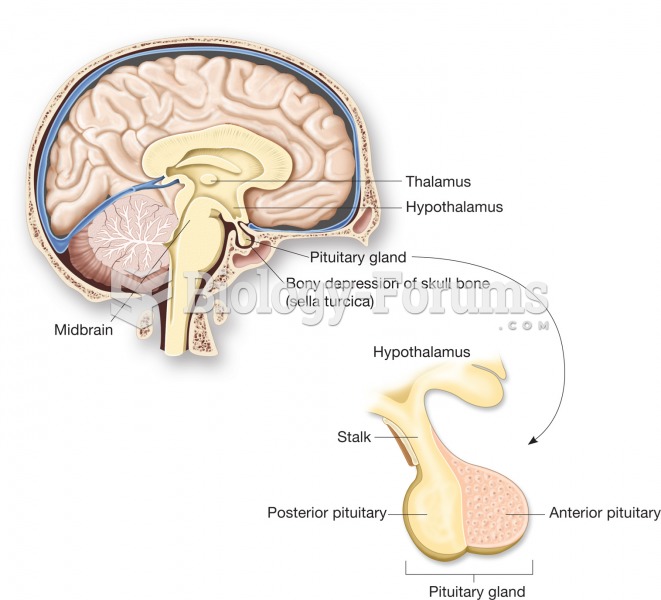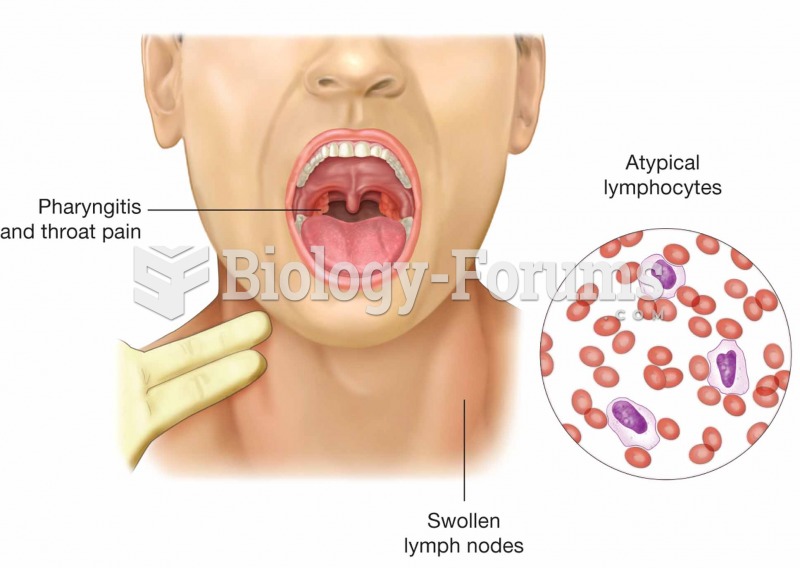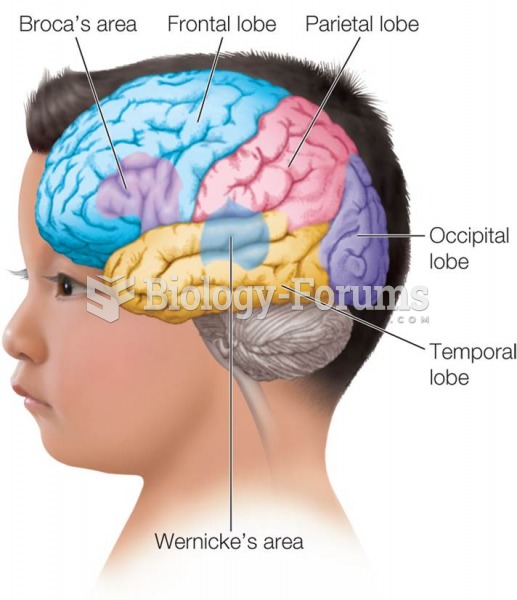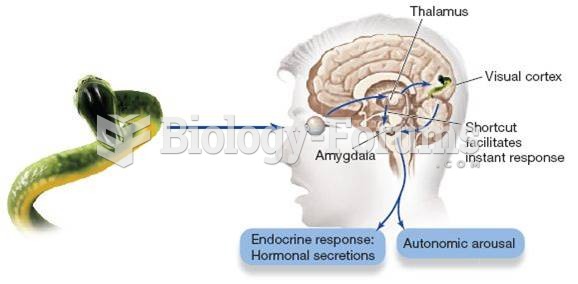|
|
|
Each year in the United States, there are approximately six million pregnancies. This means that at any one time, about 4% of women in the United States are pregnant.
The most dangerous mercury compound, dimethyl mercury, is so toxic that even a few microliters spilled on the skin can cause death. Mercury has been shown to accumulate in higher amounts in the following types of fish than other types: swordfish, shark, mackerel, tilefish, crab, and tuna.
Drying your hands with a paper towel will reduce the bacterial count on your hands by 45–60%.
Blastomycosis is often misdiagnosed, resulting in tragic outcomes. It is caused by a fungus living in moist soil, in wooded areas of the United States and Canada. If inhaled, the fungus can cause mild breathing problems that may worsen and cause serious illness and even death.
By definition, when a medication is administered intravenously, its bioavailability is 100%.
 Devil facial tumour disease causes tumours to form in and around the mouth, interfering with feeding
Devil facial tumour disease causes tumours to form in and around the mouth, interfering with feeding
 The pituitary gland lies just underneath the brain. It is subdivided into anterior and posterior lob
The pituitary gland lies just underneath the brain. It is subdivided into anterior and posterior lob





